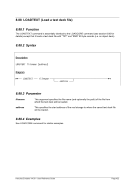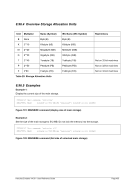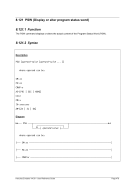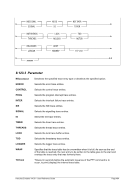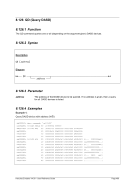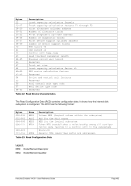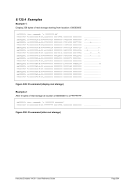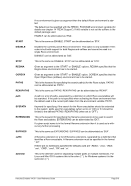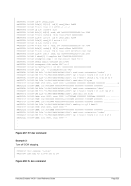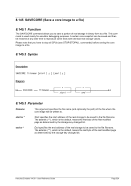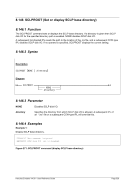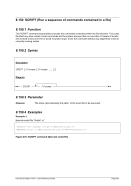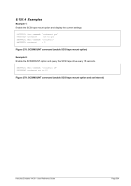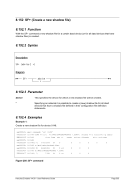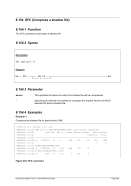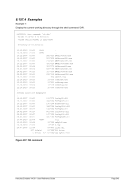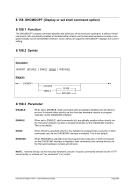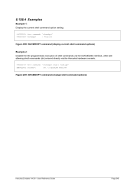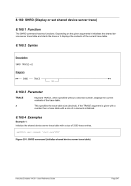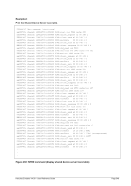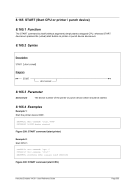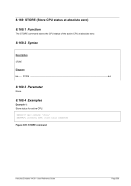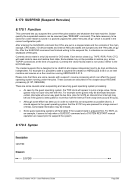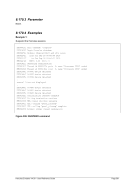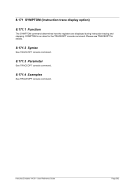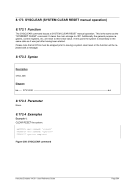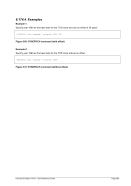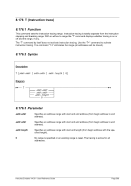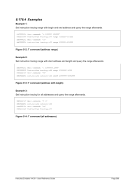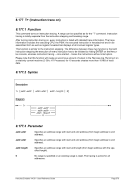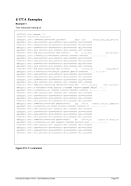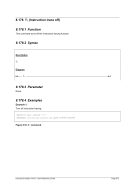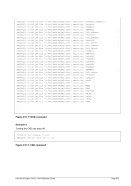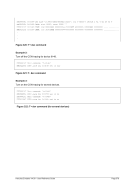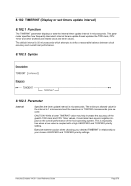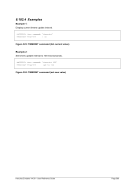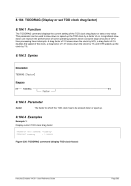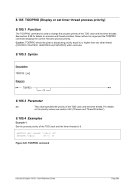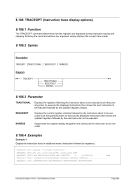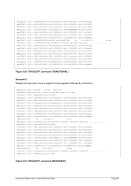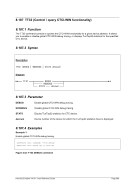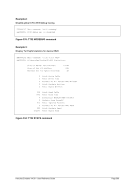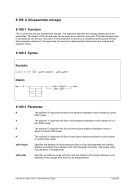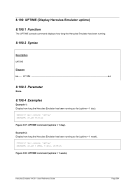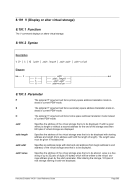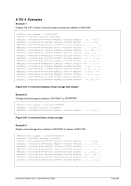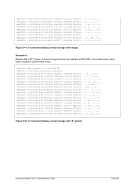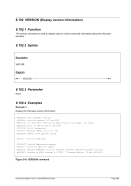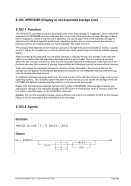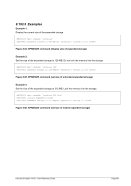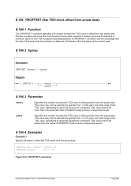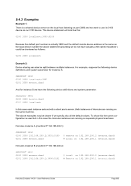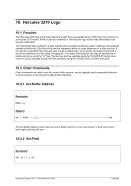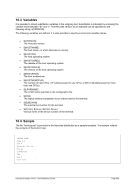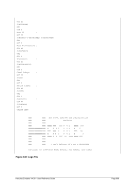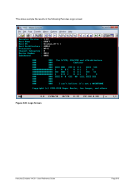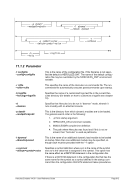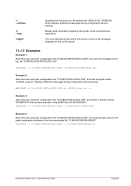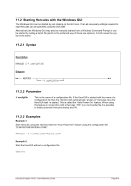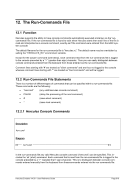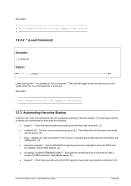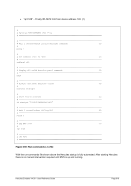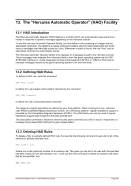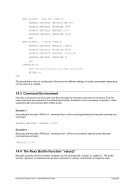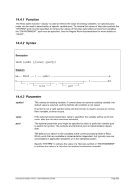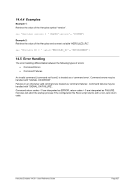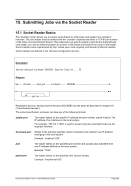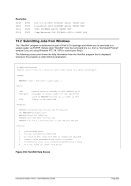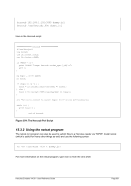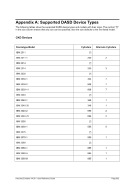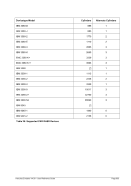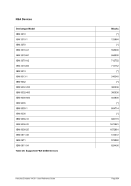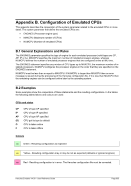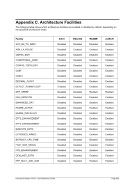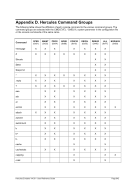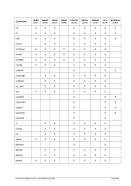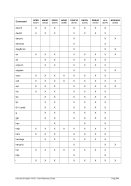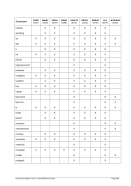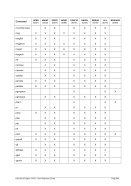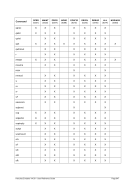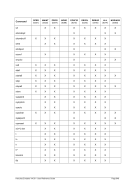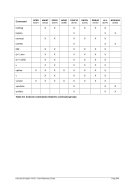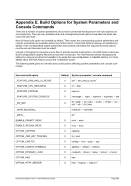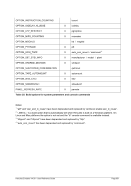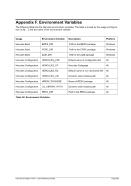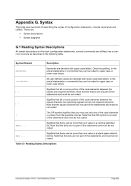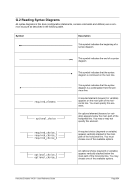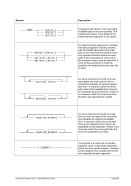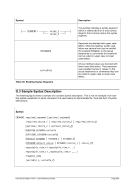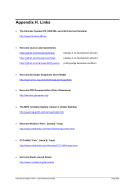number between 1 and 60.
GCPARM=n
A value affecting the amount of data moved during the garbage collectors space
recovery routine. The garbage collector determines an amount of space to move
based on the ratio of free space to used space in an emulation file and on the num-
ber of free spacesin the file. The garbage collector wants to reduce the free space
to used space ratio and the number of free spaces.
The value is logarithmic; a value of 8 means moving 2
8
the selected value while a
negative value similarly decreases the amount to be moved. Normally, 256K will be
moved for a file in an interval. Specifying a value of 8 can increase the amount to
64M. At least 64K will be moved. Specifying a large value (such as 8) may not in-
crease the garbage collection efficiency correspondingly. The default is 0. You can
specify a number from -8 to 8.
NOSTRESS=n
Indicates whether stress writes will occur or not. A track or block group may be
written under stress when a high percentage of the cache is pending write or when
a device I/O thread is waiting for a cache entry. When a stressed write occurs, the
compression algorithm and/or compression parm may be relaxed, resulting in faster
compression but usually a larger compressed image.
If NOSTRESS is set to one, then a stressed situation is ignored. You would
typically set this value to one when you want create the smallest emulation file
possible in exchange for a possible performance degradation. The default is 0. You
can specify 0 (enable stressed writes) or 1 (disable stressed writes).
FREEPEND=n
Specifies the free pending value for freed space. When a track or block group
image is written, the space it previously occupied is freed. This space will not be
available for future allocations until n garbage collection intervals have completed.
In the event of a catastrophic failure, previously written track or block group images
should be recoverable if the current image has not yet been written to the physical
disk.
By default the value is set to -1 which means that if FSYNC is specified then the
value is 1 otherwise it is 2. If 0 is specified then freed space is immediately avail-
able for new allocations. The default is -1. You can specify a number from -1 to 4.
FSYNC=n
Enables or disables FSYNC. When FSYNC is enabled then the disk emulation file
is synchronized with the physical hard disk at the end of a garbage collection inter-
val (no more often than 5 seconds though).
This means that if FREEPEND is non-zero and a catastrophic error occurs, the
emulated disks should be recovered coherently. However, FSYNC may cause pe-
rformance degradation depending on the host operating system and / or the host
operating system level. The default is 0 (fsync disabled), you can specify 0 (disable
FSYNC) or 1 (enable FSYNC).
TRACE=n
Specifies the number of CCKD trace entries. You would normally specify a non-
zero value when debugging or capturing a problem in CCKD code. When the prob-
lem occurs, you should enter the "k" Hercules console command which will print the
trace table entries. The default is 0. You can specify a number between 0 and
200000. Each trace entry represents 128 bytes. Normally, for debugging, it is re-
commended to use 100000.
LINUXNULL=n
If set to 1 then tracks written to 3390 CCKD volumes that were initialized with the
-linux option will be checked if they are null (that is if all 12 4096 byte user records
contain zeroes). This is used by the DASDCOPY utility. The default is 0.







































































































































































































































































































































































































































